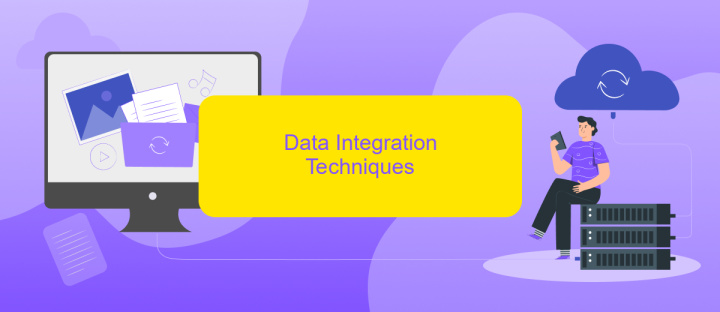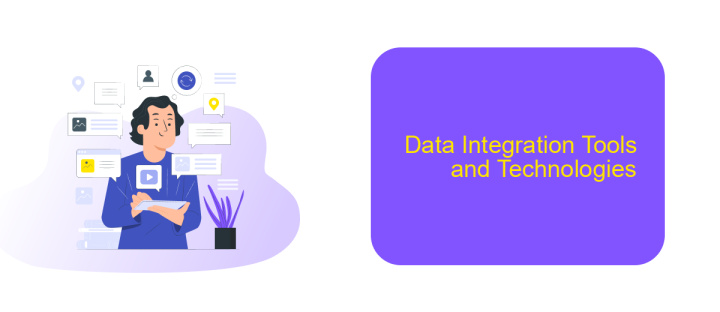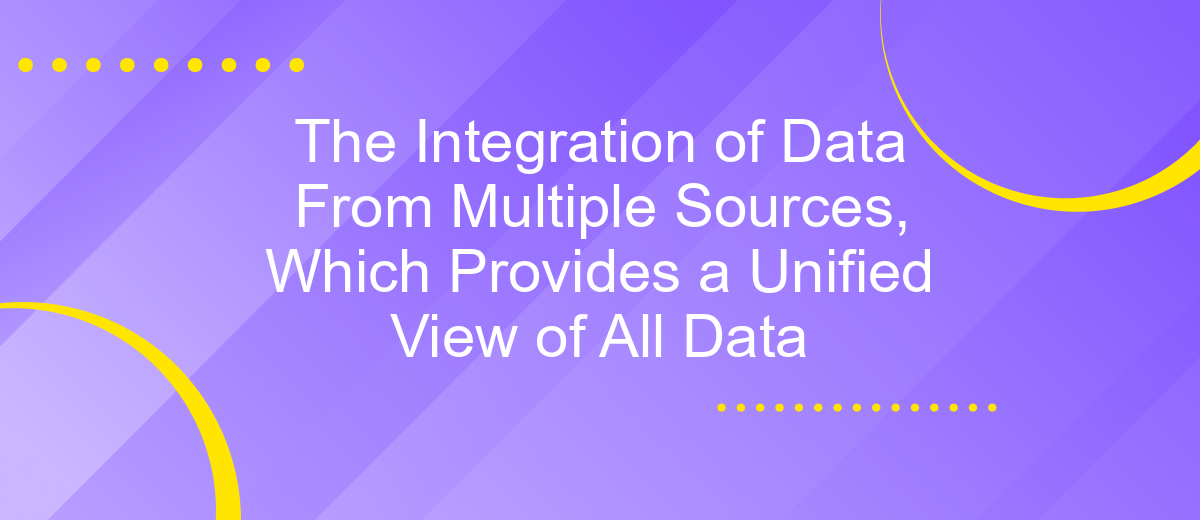The Integration of Data From Multiple Sources, Which Provides a Unified View of All Data
In today's data-driven world, the integration of data from multiple sources is essential for organizations seeking a comprehensive understanding of their operations and customers. By unifying disparate data streams into a single cohesive view, companies can enhance decision-making, streamline processes, and uncover valuable insights. This article explores the methodologies and benefits of achieving a unified data view, crucial for strategic advantage.
Introduction
The integration of data from multiple sources is a critical task in the modern data-driven world. Organizations often face challenges in consolidating data from various platforms, databases, and applications into a single, unified view. This process not only enhances data accuracy but also provides a comprehensive understanding of business operations, enabling more informed decision-making.
- Improved data accuracy and consistency
- Enhanced decision-making capabilities
- Streamlined business processes
- Increased operational efficiency
One effective solution for managing data integration is ApiX-Drive. This service allows businesses to effortlessly connect and synchronize data from various sources, ensuring a seamless flow of information. With its user-friendly interface and robust features, ApiX-Drive simplifies the integration process, making it accessible even for those with limited technical expertise. By leveraging such tools, organizations can achieve a unified data view, driving better insights and business outcomes.
Data Integration Challenges and Benefits

Integrating data from multiple sources presents several challenges, including data inconsistency, differing data formats, and varying data quality. Organizations often struggle with ensuring that data from disparate sources is harmonized and accurate. Additionally, the integration process can be time-consuming and resource-intensive, requiring specialized skills and tools to manage the complexity. Security and privacy concerns also arise, as sensitive information must be protected during the integration process.
Despite these challenges, the benefits of data integration are substantial. A unified view of data enables better decision-making, as it provides comprehensive insights that are not possible when data is siloed. Tools like ApiX-Drive facilitate seamless data integration by automating the process and ensuring data consistency. This reduces the time and effort required, allowing organizations to focus on analyzing and leveraging their data. Enhanced data quality and accessibility ultimately lead to improved operational efficiency and competitive advantage.
Data Integration Techniques

Data integration involves combining data from different sources to provide a unified view. This process is crucial for organizations seeking to leverage data for informed decision-making. There are several techniques to achieve effective data integration:
- ETL (Extract, Transform, Load): This technique involves extracting data from various sources, transforming it into a suitable format, and loading it into a target database or data warehouse.
- Data Virtualization: This method allows users to access and manipulate data without requiring technical details about the data, such as its location or format.
- API Integration: Tools like ApiX-Drive can automate the integration process by connecting different applications and systems, ensuring real-time data flow and synchronization.
- Data Warehousing: This approach involves storing data from multiple sources in a central repository, enabling comprehensive analysis and reporting.
Each technique has its own advantages and is suited for different scenarios. Choosing the right method depends on factors such as the complexity of the data environment, the volume of data, and the specific requirements of the organization. Utilizing tools like ApiX-Drive can significantly streamline the integration process, making it more efficient and reliable.
Data Integration Tools and Technologies

Data integration is a critical aspect of modern data management, enabling organizations to consolidate information from diverse sources into a unified view. This process improves data accessibility and enhances decision-making capabilities.
Several tools and technologies are available to facilitate seamless data integration. These tools help in extracting, transforming, and loading (ETL) data from various sources, ensuring consistency and accuracy.
- Apache Nifi: An open-source data integration tool that automates the flow of data between systems.
- Talend: Provides comprehensive data integration solutions with robust ETL capabilities.
- ApiX-Drive: A service that simplifies the setup of integrations between different platforms, making it easier to automate workflows.
- Informatica: Offers a suite of data integration tools designed for enterprise-level data management.
Choosing the right data integration tool depends on the specific needs and scale of your organization. Tools like ApiX-Drive are particularly useful for businesses looking to automate and streamline their data workflows with minimal setup effort. By leveraging these technologies, organizations can achieve a more cohesive and actionable view of their data.
Best Practices for Data Integration
Effective data integration requires careful planning and execution to ensure seamless connectivity and data consistency. Start by identifying the data sources and understanding the data structures involved. Establish a clear data mapping strategy to align data fields across various sources. It's crucial to maintain data quality by implementing validation checks and cleansing routines. Regularly monitor and update your integration processes to adapt to any changes in data sources or requirements.
Utilizing robust integration tools can significantly streamline the process. Services like ApiX-Drive offer user-friendly interfaces and automation capabilities, enabling you to connect multiple data sources with minimal effort. They provide pre-built connectors and customizable workflows to suit specific business needs. Ensure that your integration solution supports scalability and security to handle growing data volumes and protect sensitive information. By following these best practices, you can achieve a unified and reliable view of your data, driving better decision-making and operational efficiency.
FAQ
What is data integration and why is it important?
What are the common challenges in integrating data from multiple sources?
How can I ensure the quality of integrated data?
What are some tools available for automating data integration?
How can data integration benefit my business?
Apix-Drive is a simple and efficient system connector that will help you automate routine tasks and optimize business processes. You can save time and money, direct these resources to more important purposes. Test ApiX-Drive and make sure that this tool will relieve your employees and after 5 minutes of settings your business will start working faster.

